On June 20, Wyanne Smallboy-Wesley of the Bighorn/Stoney First Nation was driving into Jasper from the Palisades Centre with her grandfather, Elder John Wesley of the Bighorn/Chiniki Stoney First Nation.
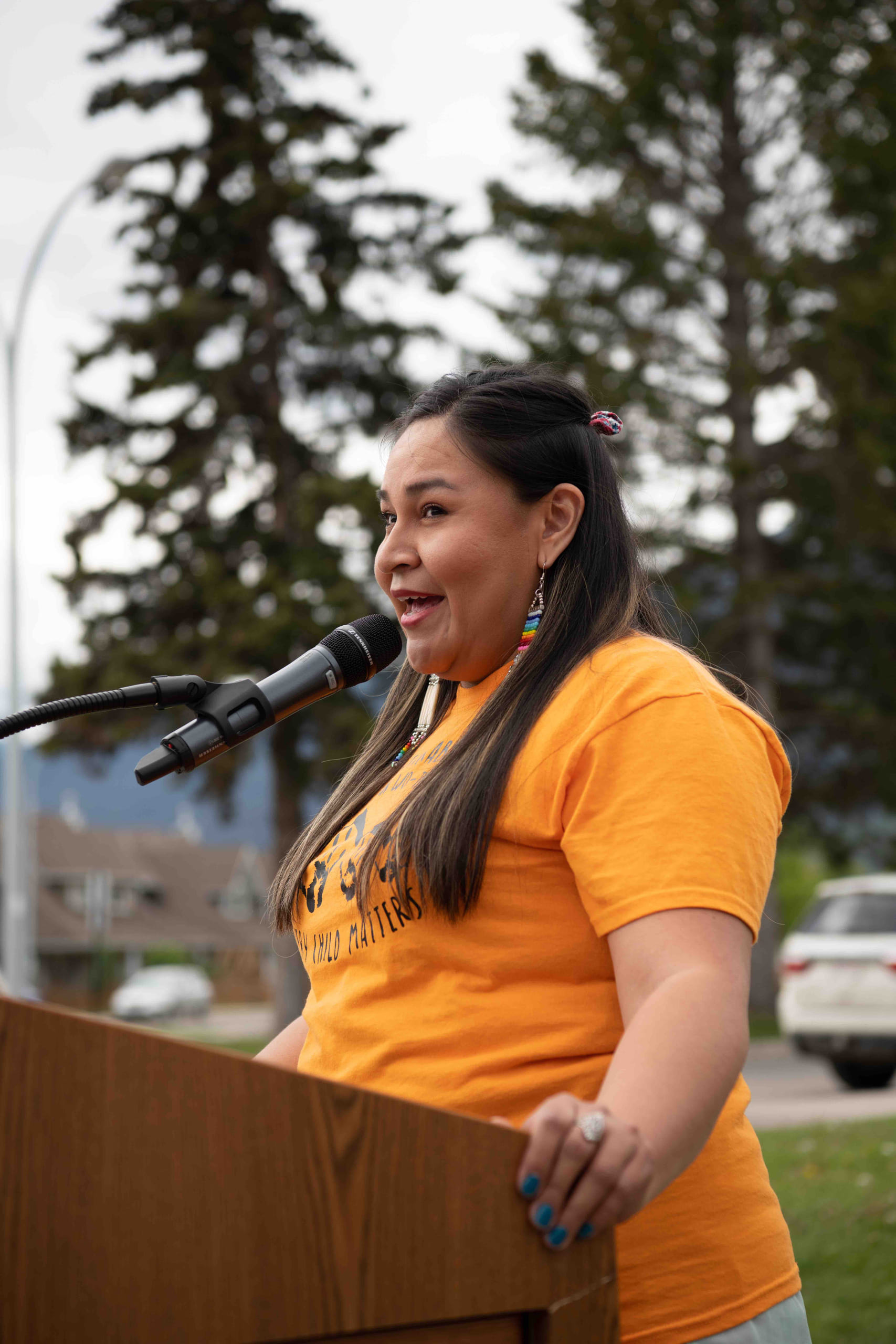
Elder John Wesley, from the Bighorn/Stoney First Nation, and his granddaughter, Wyanne Smallboy-Wesley. // Matt Quiring
As they passed Chief Mountain—known to Jasper residents and tourists as Roche Bonhomme— Wyanne asked her grandfather what he was going to say to the crowd which was to gather later that morning to honour National Indigenous Peoples Day.

Roche Bonhomme, known to Stoney people as Chief Mountain. // WIKI COMMONS
Her grandfather told her something Wyanne considered remarkable. He said he wanted to share the fact that he could finally feel like he could be proud of his own culture.
“He said ‘for me as a Stoney man, I can finally feel I can be an Indian again. And if I feel ok to be an Indian again, my grandchildren can too,’” Wyanne said.
Wyanne is one of many of John Wesley’s grandchildren. On the day they were in Jasper, she was the oldest Wesley grandchild present. It was her duty to honour her family, she said, and part of that honouring was helping translate her grandfather’s words from the Stoney language to English during the Every Child Matters flag-raising ceremony.
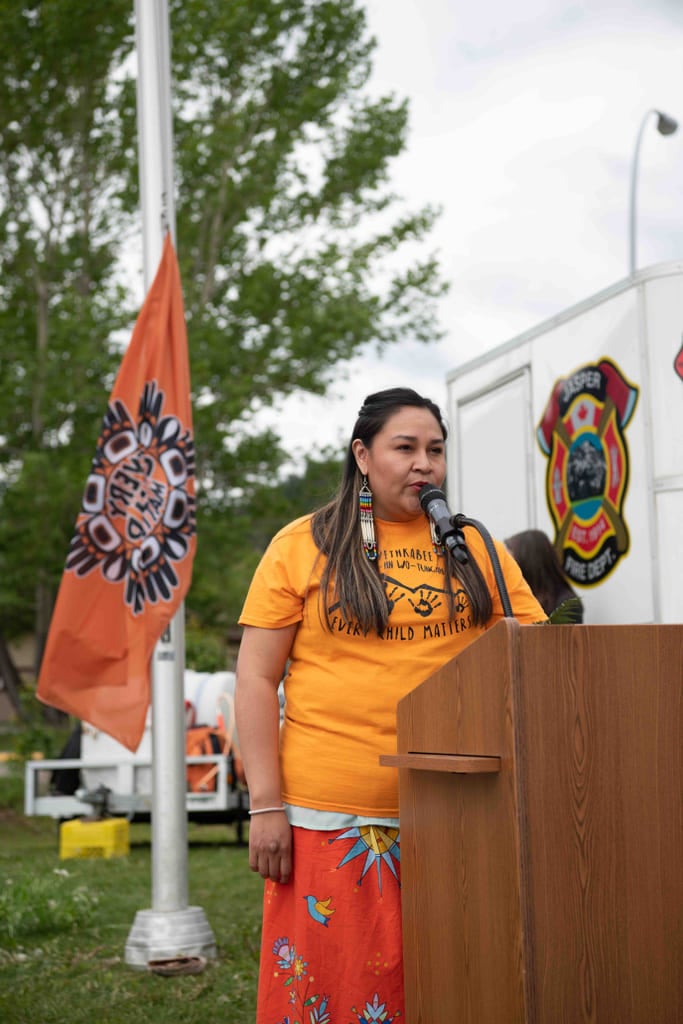
Wyanne Smallboy-Wesley helped translate her grandfather’s words from Stoney to English during a Every Child Matters flag-raising ceremony June 20. // Matt Quiring
“My grandpa wants to say we are all mountain people, because we live, play, meet, visit and laugh and dance in the mountains,” she told the crowd.
Wyanne recounted a story from her Stoney culture about how the lynx got its mischievous smile, how its face represented the happiness and playfulness of being a child.
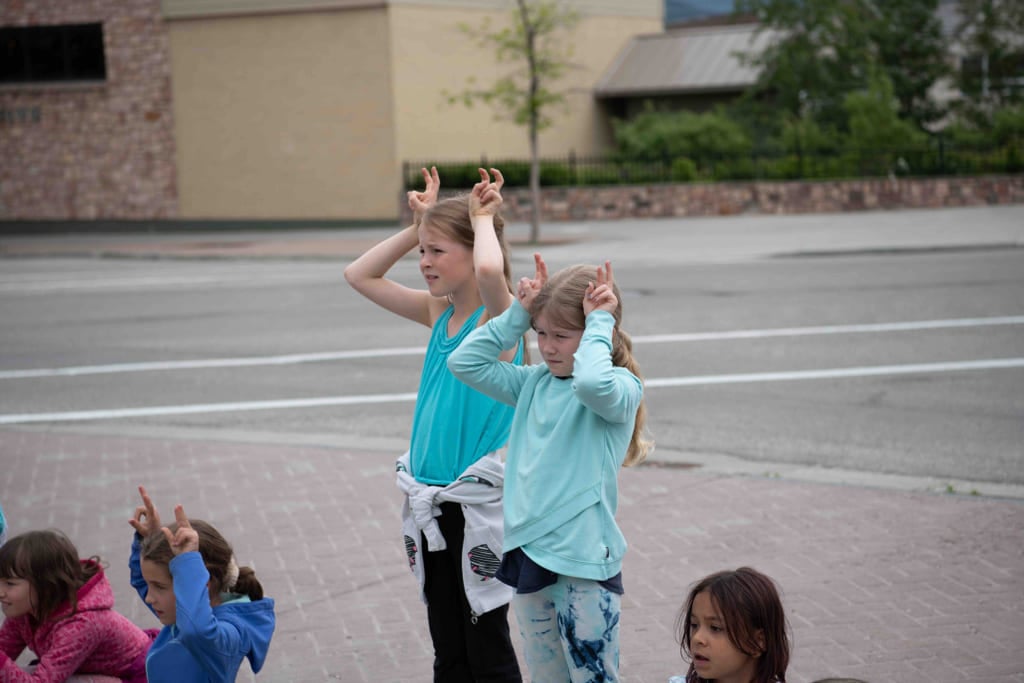
Jasper students were told the story of how the lynx got its mischievous smile. // Matt Quiring
“The lynx was raised by Techawski, she said. “Techawski was our Stoney brother who helped to create the goat, the mountain lion, the rams, the caribou, the rabbits…all of these he helped shape when they were first being made.”
Wyanne’s family knew the story well. It had been told many time in their homes. But when her grandfather John Wesley was her age, he would never have been allowed—let alone asked—to tell the story in public, she said.
“Those kinds of stories were told by my grandpa but weren’t considered authentic literature,” Wyanne said. “They were called devil worship or savagery.”
Before the flag raising, together with her cousins, Wyanne showed onlookers how to smudge. Burning locally-picked mountain sage, they washed and cleansed with the smoke.

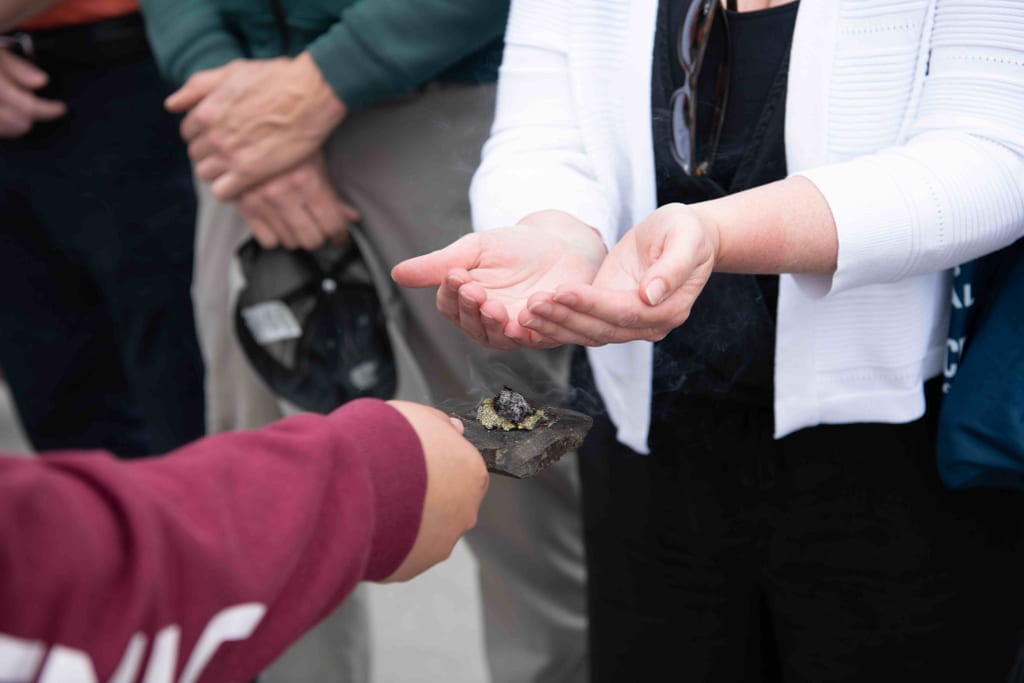
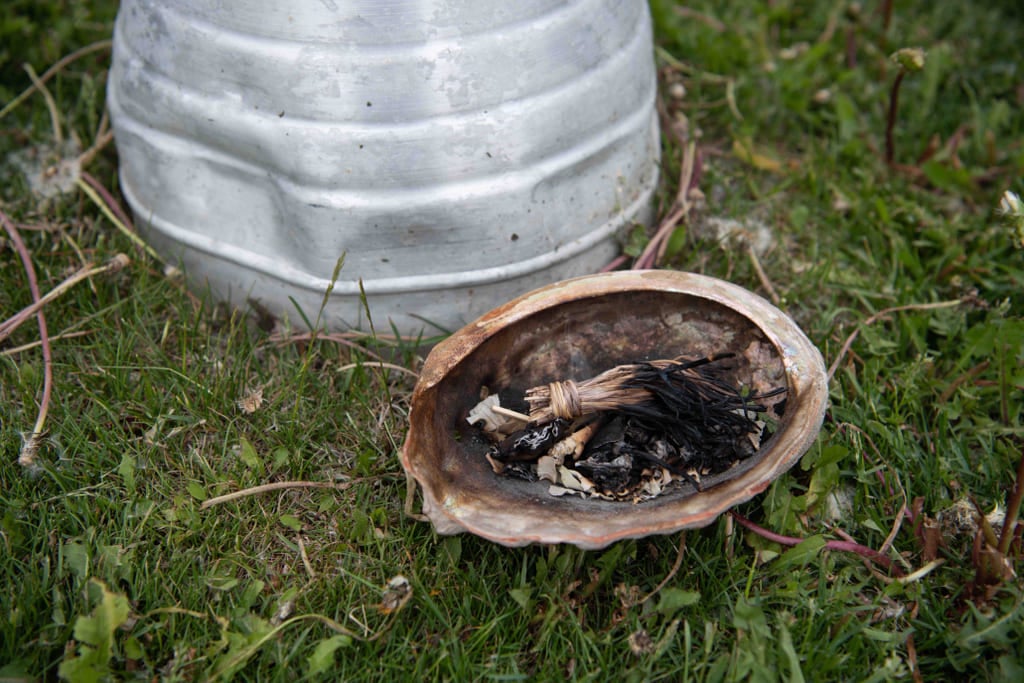
Elder John Wesley’s helpers assisted Jasper students participate in a traditional smudge cleansing ceremony. // Matt Quiring
“Now we smell like the land,” she told the crowd. “We blend in, we’re friends with nature and friends with each other.”

After the cleansing, Elder John Wesley led a pipe ceremony. It included two songs that originated with the Indigenous People who used to travel in the Columbia Icefields Area. Wyanne said the songs, which had been passed down through generations, also connected Banff’s Cave and Basin area and Jasper’s Chief Mountain.

Elder John Wesley from the Bighorn Stoney First Nation (centre) led a peace pipe ceremony in Jasper for National Indigenous People’s Day. // Matt Quiring
“The ceremony lets the mountains know we’re here, we come as friends, we come as children,” Wyanne explained.


The peace pipe ceremony was not originally part of the day’s itinerary. But it was important to Elder John Wesley.
“He said ‘we need to do this properly,’” Wyanne said.
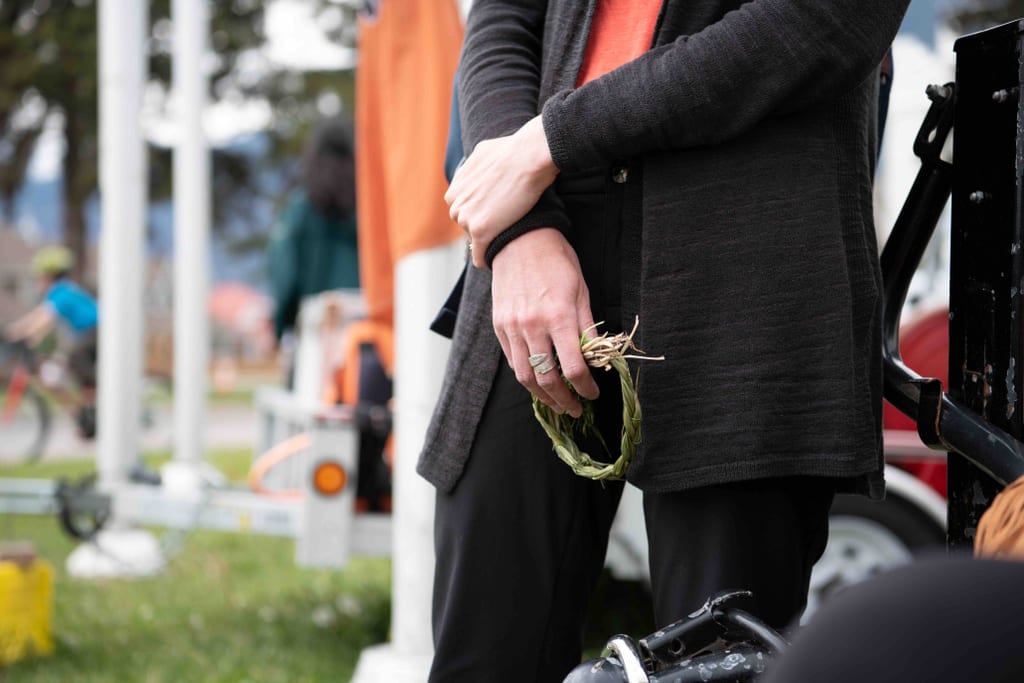
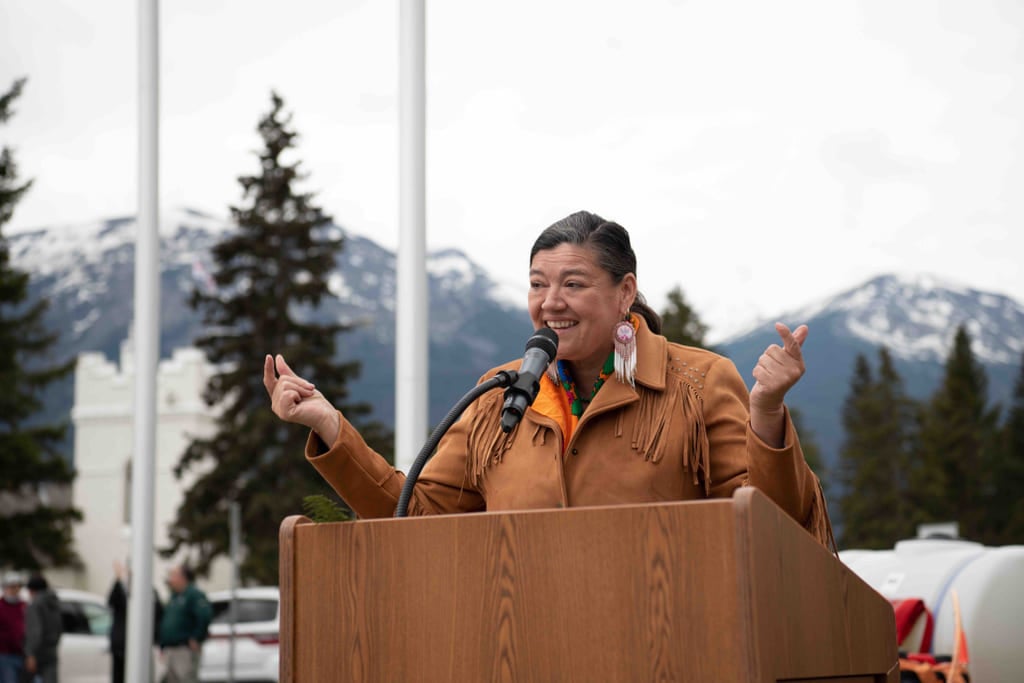
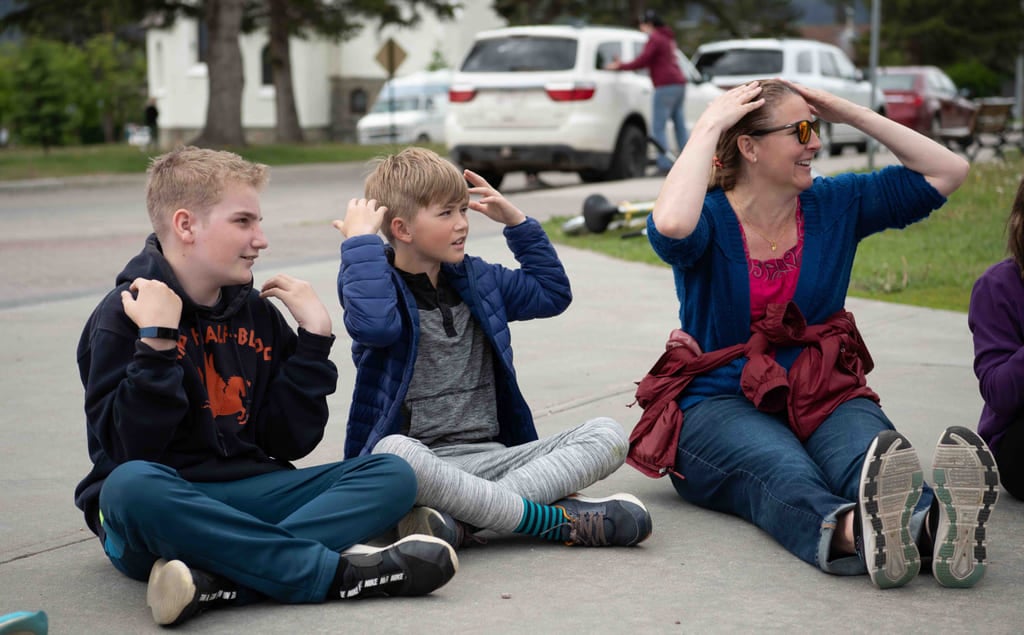
As such, the day had special significance.
“I’ve been to many pipe ceremonies,” Wyanne said. “I haven’t seen anything this special, where the elder was given the full space and full responsibility of leading the program.
“It was a once in a red moon scenario.”

Elder John Wesley and Jasper Mayor Richard Ireland hoist the Every Child Matters flag. The Jasper celebration was a “once in a red moon scenario,” Wyanne Smallboy-Wesley said. // Matt Quiring
A large part of her grandfather’s insistence on having a pipe ceremony was to show his grandchildren that they can be free to live a life with Creator and nature, Wyanne said. That wasn’t possible for his generation, nor the one that came after. Wesley is a survivor of Federal Indian Day Schools. Similar to residential schools, the purpose of Indian Day Schools was to assimilate Indigenous children and erase Indigenous language and culture.
“He said the ones who did make it home, the negative affect it had on them is still harming our people today,” Wyanne said.
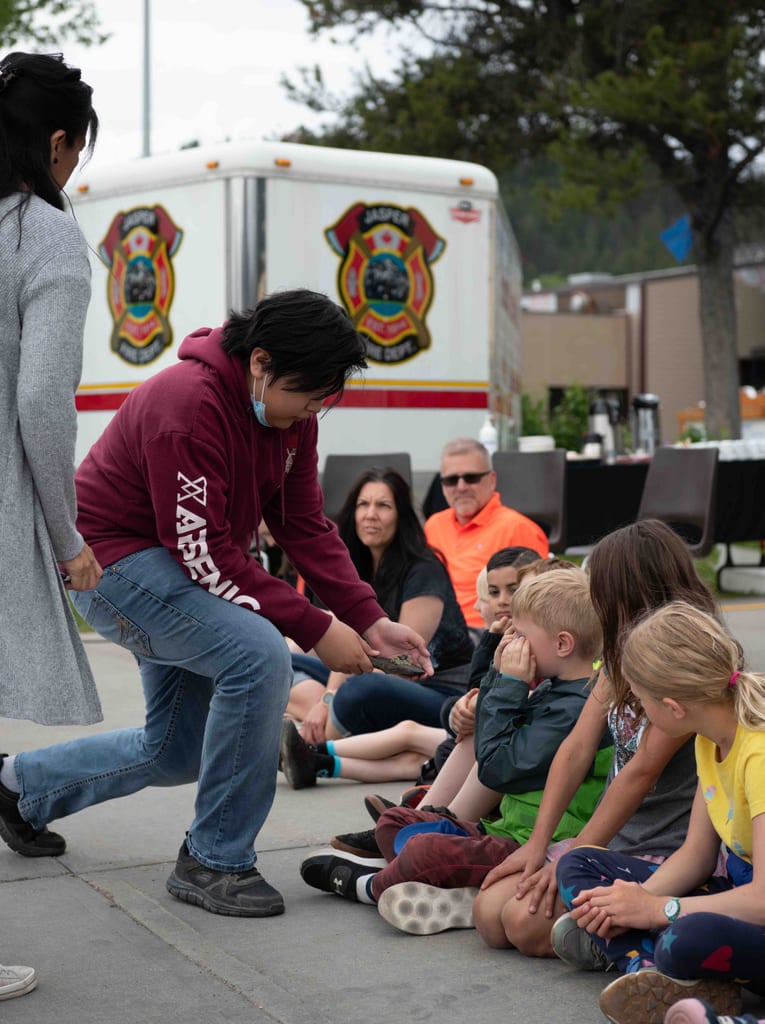
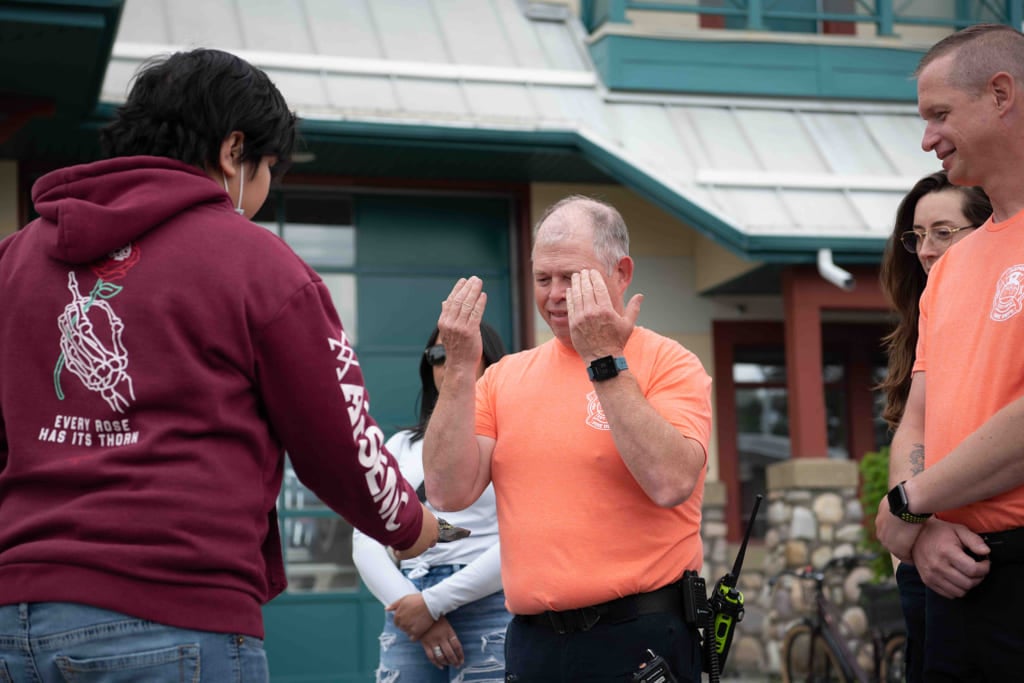
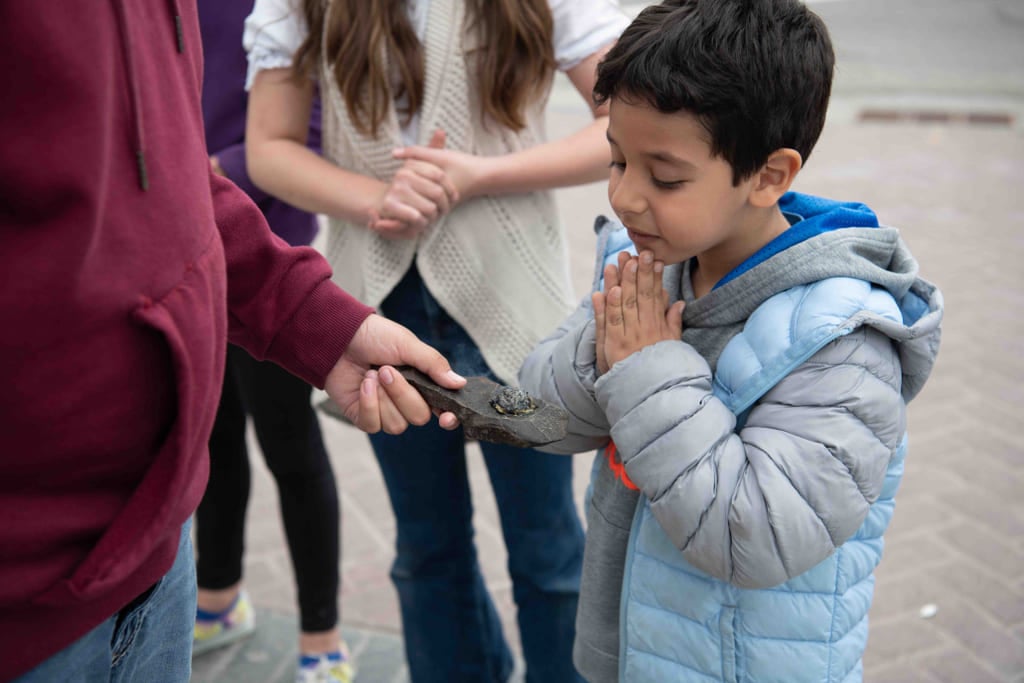
Considering that hard history, it took Elder John Wesley many years before he could trust in the modern education system. But since watching Wyanne successfully navigate high school, then go on to earn a post-secondary degree, Wesley now sees how an education can transform a life for the better, his granddaughter said.
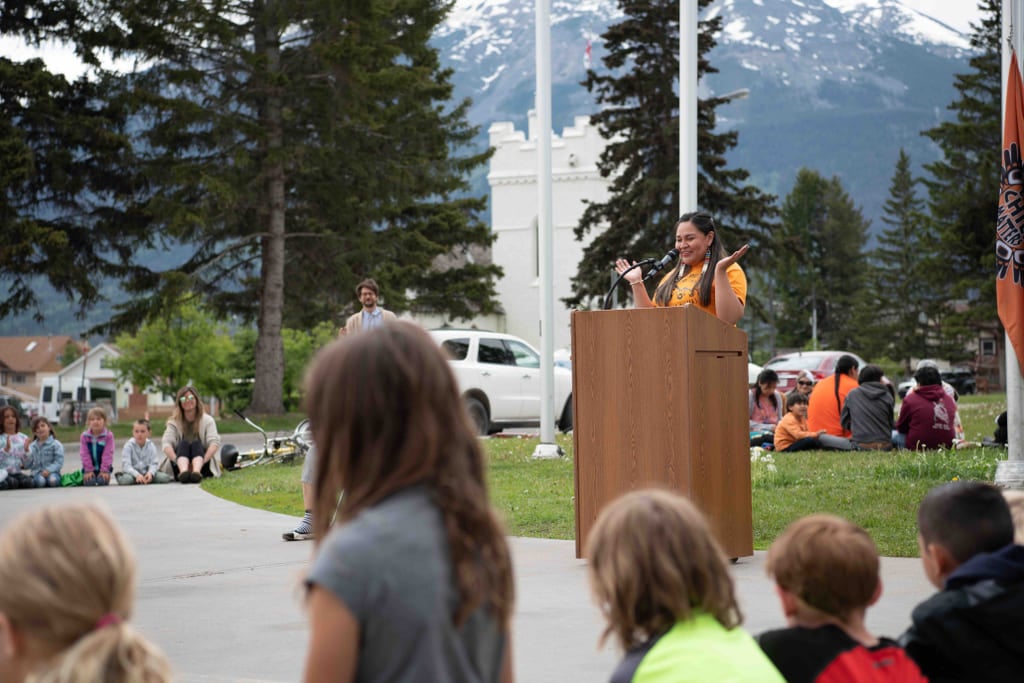
Wyanne Smallboy-Wesley is an Indigenous Facilitator, Traditional Knowledge Specialist and Community Development Consultant // Matt Quiring
“He’s learning, through me, that high school and university really does matter,” she said.
“That’s his reconciliation.”


